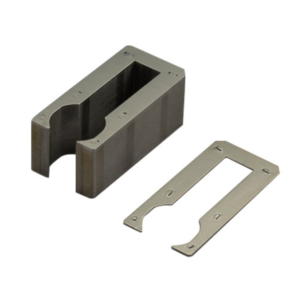
Introduction
Significance of Understanding Transformer Core Functionality
Understanding the functionality of transformer cores holds paramount importance. It empowers engineers to actively optimize core design, thereby enhancing energy efficiency and minimizing power wastage. By comprehensively grasping the functional intricacies of transformer cores, engineers can proactively make informed decisions to elevate transformer performance and bolster reliability.
Fundamentals of Transformer Cores
Definition and Purpose
Transformer cores play a pivotal role as essential components within electrical transformers, actively facilitating the conversion of voltage levels between circuits. Constructed primarily from laminated sheets of magnetic material, these cores meticulously provide a conduit for the magnetic flux generated by the transformer’s primary winding.
Role in Power Distribution
Transformer cores play a crucial role in power distribution systems by enabling the efficient transmission of electrical energy. They help regulate voltage levels, ensuring that electricity can be transmitted over long distances with minimal power loss. Additionally, transformer cores aid in voltage transformation, allowing for the adaptation of voltage levels to suit various applications.
Basic Components and Construction
Transformer cores, comprised of laminated sheets crafted from materials such as silicon steel or amorphous metal alloys, form the backbone of electrical transformers. These sheets, carefully stacked and insulated, serve as the foundation of the core structure, facilitating the seamless flow of magnetic flux generated by the transformer’s windings. The construction of transformer cores is meticulously engineered with the primary objective of minimizing energy losses and maximizing efficiency in power transmission.
Functional Attributes of Transformer Cores
Magnetic Flux Conduction and Concentration
Transformer cores facilitate the conduction and concentration of magnetic flux, ensuring efficient energy transfer between circuits. By providing a path for the magnetic field generated by the transformer’s windings, cores enable the induction of voltage in the secondary winding.
Minimization of Eddy Current Losses
Transformer cores are designed to minimize eddy current losses, which occur due to the circulation of induced currents within the core material. Through the use of laminated sheets and insulation, cores reduce the conductivity of these currents, thereby decreasing energy wastage and improving overall efficiency.
Influence on Efficiency and Energy Transfer
The functionality of transformer cores significantly impacts the efficiency and effectiveness of energy transfer in electrical systems. Cores with optimized designs and materials enhance energy transmission efficiency, resulting in reduced power losses and increased system performance.
Impact on Voltage Regulation and Stability
Transformer cores play a crucial role in voltage regulation and stability by controlling the magnetic flux within the transformer. By regulating the voltage induced in the secondary winding, cores ensure stable voltage output, maintaining the integrity of the electrical distribution system.
Factors Affecting Core Functionality
Core Material Selection
Core functionality is significantly influenced by the selection of materials used in its construction. By carefully selecting materials with suitable magnetic properties, such as silicon steel or amorphous metal alloys, engineers can optimize the functionality of transformer cores and enhance their performance in energy transfer processes.
Core Shape and Design Considerations
The shape and design of transformer cores play a crucial role in determining their functionality. Engineers must consider factors such as flux distribution, losses, and efficiency when designing core shapes. By employing innovative designs and shapes tailored to specific applications, they can maximize the functional capabilities of transformer cores.
Lamination Techniques and Their Effect on Core Performance
Lamination techniques have a significant impact on the performance of transformer cores. Through the use of advanced lamination methods, such as interleaved stacking or welded stacking, engineers can minimize energy losses associated with eddy currents and hysteresis. These techniques enhance the functional efficiency of transformer cores, resulting in improved energy transfer and system performance.